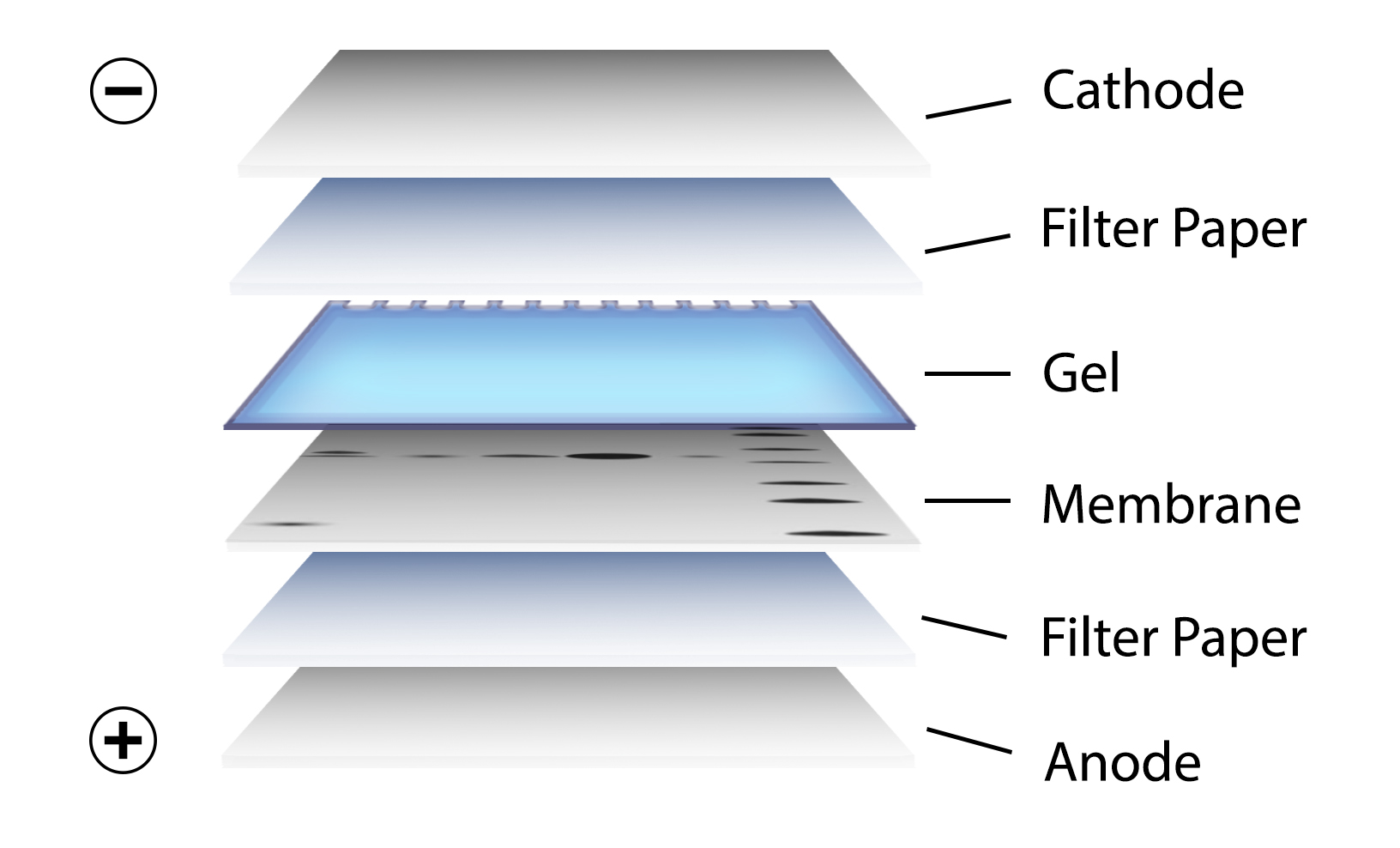Dry Transfer Western Blot. Western blotting combines the resolution of gel electrophoresis with the specificity of immunoassays allowing individual proteins in mixtures to be identified and analyzed. Effective protein transfer is also heavily reliant on the gel acrylamide percentage the molecular weight of electrophoresed proteins and the blotting membrane used 3.

There are many different approaches to western blot transfer however generally is it a term used to define the transfer of biological molecules such as protein molecules from the gel to a solid support membrane which is usually made of a chemically inert substance such as nitrocellulose or polyvinylidene difluoride also known as pvdf. What is dry western blot transfer. The first step is to prepare the protein sample by mixing it with a detergent called sodium dodecyl sulfate that applies a negative charge across the protein allowing it to be separated by size through gel electrophoresis.
Electroelution wet semi dry and dry and diffusion transfer techniques all have their merits and applications but it is important to note that method alone will not guarantee a successful blot.
Instead the gel is placed between purchased preassembled stacks containing the transfer membrane and proprietary buffer matrices. Western blotting combines the resolution of gel electrophoresis with the specificity of immunoassays allowing individual proteins in mixtures to be identified and analyzed. Western blotting involves the transfer of proteins that have been separated by gel electrophoresis onto a membrane followed by immunological detection of these proteins. Semi dry transfer is generally faster but wet transfer has a less tendency to failure and is especially recommended for large proteins more than 100 kd.